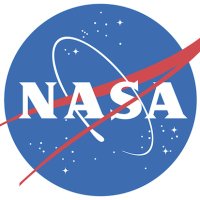Studying the origin and evolution of life on Earth to inform the search for life elsewhere in the Universe. Verification: https://t.co/G2QVWJ6QBi
ID:15078840
linkhttp://astrobiology.nasa.gov calendar_today10-06-2008 22:49:56
need set extendedValue is not photostdClass Object ( [display_url] => pic.twitter.com/RIkWnjuqhO [expanded_url] => https://twitter.com/NASAAstrobio/status/1778880780543881442/photo/1 [ext_alt_text] => This artist’s concept depicts one possible appearance of the planet Kepler-452b, the first near-Earth-size world to be found in the habitable zone of star that is similar to our sun. The habitable zone is a region around a star where temperatures are right for water — an essential ingredient for life as we know it — to pool on the surface. Scientists do not know if Kepler-452b can support life or not. [id_str] => 1778880652944764928 [indices] => Array ( [0] => 276 [1] => 299 ) [media_key] => 16_1778880652944764928 [media_url_https] => https://pbs.twimg.com/tweet_video_thumb/GK_ah2iWcAAclf_.jpg [type] => animated_gif [url] => https://t.co/RIkWnjuqhO [ext_media_availability] => stdClass Object ( [status] => Available ) [sizes] => stdClass Object ( [large] => stdClass Object ( [h] => 586 [w] => 1040 [resize] => fit ) [medium] => stdClass Object ( [h] => 586 [w] => 1040 [resize] => fit ) [small] => stdClass Object ( [h] => 383 [w] => 680 [resize] => fit ) [thumb] => stdClass Object ( [h] => 150 [w] => 150 [resize] => crop ) ) [original_info] => stdClass Object ( [height] => 586 [width] => 1040 [focus_rects] => Array ( ) ) [video_info] => stdClass Object ( [aspect_ratio] => Array ( [0] => 520 [1] => 293 ) [variants] => Array ( [0] => stdClass Object ( [bitrate] => 0 [content_type] => video/mp4 [url] => https://video.twimg.com/tweet_video/GK_ah2iWcAAclf_.mp4 ) ) ) )
